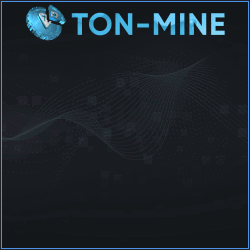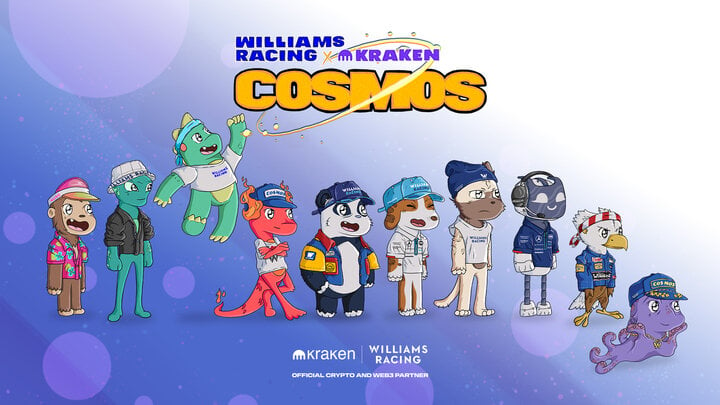ARTICLE AD BOX
The rivalry between the smart contract creator, Ethereum and Solana, the blockchain speed demon, has kept the blockchain world alight.
As the adoption of blockchain technology increases, the competitive space between these two giants is heating up. Even as it continues to dominate, Ethereum also faces various scaling issues. Solana, on the other hand, still has reliability issues concerning its network but is fast growing in reputation. This brings us to the question – Who ought to wear the crypto crown?
In the analysis below, we have mentioned the strengths, weaknesses and the innovations of the two projects.
We have also added insights from Lightchain AI (LCAI), a new project that aims to reshape the entire blockchain landscape.
Ethereum and its First Mover’s Advantage
Ever since its launch in 2015, Ethereum has been successful in maintaining its position as the largest blockchain for smart contracts and dApps. The Ethereum ecosystem houses most of the decentralized finance (DeFi) protocols, non-fungible token (NFTs) platforms and is applied to other related use cases we see today.
So, what are the strength’s of Ethereum?
Firstly, it is Ethereum’s large developer ecosystem. This vast network of developers ensures constant innovation in areas such as DeFi protocols and NFT marketplaces. Platforms like Uniswap and Open Sea are examples of these.
Then there’s the heightened security protocols in place. Ethereum uses the proof-of-stake (PoS) mechanism which was introduced with Ethereum 2.0. It has significantly enhanced the security of reduced energy consumption of Ethereum.
Lastly, Ethereum commands a huge market share for DeFi and NFT. More than 60% of the Defi projects and NFTs in existence are hosted on Ethereum.
However, there are certain challenges that Ethereum faces as well.
At the top of these challenges is the high gas fees. Transaction costs tend to spike on Ethereum, especially during periods of high network usage. Ethereum also suffers from scalability issues, struggling to meet the growing demand for fast and affordable transactions, despite the 2.0 upgrades.
Solana and new platforms such as Lightchain AI are increasingly challenging Ethereum’s attractiveness.
Solana: The Speedster Blockchain
Solana has shown the spotlight on itself after making headlines because of its capabilities of processing 65,000 transactions per second (TPS) with fees typically under %0.01. It is seriously challenging Ethereum thanks to its technical advantages and the growing ecosystem.
Solana’s strengths make it a top contender for gaining the crypto crown from Ethereum. The first is its high throughput. Solana can achieve unparalleled transaction speeds by combining Proof-of-History (PoH) and Proof of Stake (PoS). This makes it ideal for high-volume applications such as gaming and decentralized exchanges.
Solana is also affordable, making it an attractive option for users and developers alike. Its expanding ecosystem is home to projects such as Magic Eden (NFTs) and Serum (DeFi), showcasing its potential as an innovation hub.
However, Solana also faces some challenges. Network reliability is one of them. Solana has experienced outages and downtimes, raising concerns about its scalability. There are also concerns related to centralization. Many critics think that Ethereum’s validator network is more decentralized than that of Solana, posing potential risks.
Solana vs Ethereum
| Feature | Ethereum (ETH) | Solana (SOL) |
| Consensus Mechanism | Proof of Stake (PoS) | Proof of History (PoH) + PoS |
| Transaction Speed | 15 TPS | 65,000 TPS |
| Transaction Fees | High | Low |
| Developer Ecosystem | Extensive | Rapidly Growing |
| Energy Efficiency | Improved with PoS | High |
| Scalability | Moderate | Excellent |
Lightchain AI: A Game-Changer in Blockchain Innovation
It’s true that Solana and Ethereum dominate the present landscape. But a new project, Lightchain AI (LCAI) is here to change the day by integrating artificial intelligence into blockchain. The project aims to solve many of the problems that plague Ethereum and Solana.
So how different is Lightchain AI?
There are many things that make Lightchain AI different, such as the Proof of Intelligence consensus mechanism. Here nodes are rewarded for performing AI computations for optimization, inference and model training. Proof of Intelligence makes sure that computational resources are used the most productively.
Additionally, Lightchain AI has roles to play in industries like supply chain, finance and healthcare. It offers privacy-preserving AI solutions that address critical needs. Decentralized governance and federated learning help reduce bias. They also make decision-making more inclusive. This can increase the chances of widespread adoption.
Lightchain AI also focuses heavily on employing sharding, DAG structures, Layer 2 solutions and other energy-efficient systems to ensure scalability without compromising performance. This makes it a project which can be viewed as a sustainable alternative.
The LCAI token is the project’s native token. It can be used for payments, in staking, governance and accessing premium AIVM features. This ensures that the ecosystem provides dynamic rewards and token scarcity by using deflationary mechanisms.
Lightchain AI’s roadmap carefully demonstrates the future for strategic growth, partnership and community-driven innovation. It focuses on making the project into a leader in the future AI-blockchain landscape.
Potential Impact on Ethereum and Solana
- For Solana: Solana’s speed can be combined with Lightchain Ai’s AI-driven scalability solutions, helping to address Solana’s reliability issues.
- For Ethereum: Ethereum still faces scalability and cost challenges. Integrating AI into its ecosystem will help keep it competitive in a growing competitive market.
Real-World Use Cases: Who Wins?
| Blockchain | Strengths | Applications |
| Ethereum | It dominates in DeFi and NFTs with strong infrastructure. | Its applications include DeFi protocols managing billions, and in NFT ecosystem for creators and collectors. |
| Solana | Charges low fees and provides fast transactions, making it ideal for high-speed applications. | It is used for blockchain gaming, and in decentralized exchanges. |
| Lightchain AI | It focuses on AI integration to expand beyond traditional blockchain capabilities. | It has applications in healthcare, logistics, and finance. |
Conclusion
With the emergence of platforms like Lightchain AI adds a new dimension to the rivalry between Ethereum and Solana. As blockchain evolves, success will only come to projects which focus on adaptability, innovation and real-world utility.
Lightchain AI’s ongoing presale offers an opportunity to be part of a platform that could shape the next decade of crypto innovation. Learn more about Lightchain AI here.
- Website: https://lightchain.ai
- Whitepaper: https://lightchain.ai/lightchain-whitepaper.pdf
- Twitter/X: https://x.com/LightchainAI
- Telegram: https://t.me/LightchainProtocol
Disclaimer This article is a paid publication and does not have journalistic/ editorial involvement of CoinGape. CoinGape does not endorse/ subscribe to the contents of the article/advertisement and/or views expressed herein. Do your market research before taking any actions . The author or the publication does not hold any responsibility for your personal financial loss.
For PR & Sponsored Content Reach us :
 8 months ago
404147
8 months ago
404147









 English (US) ·
English (US) ·